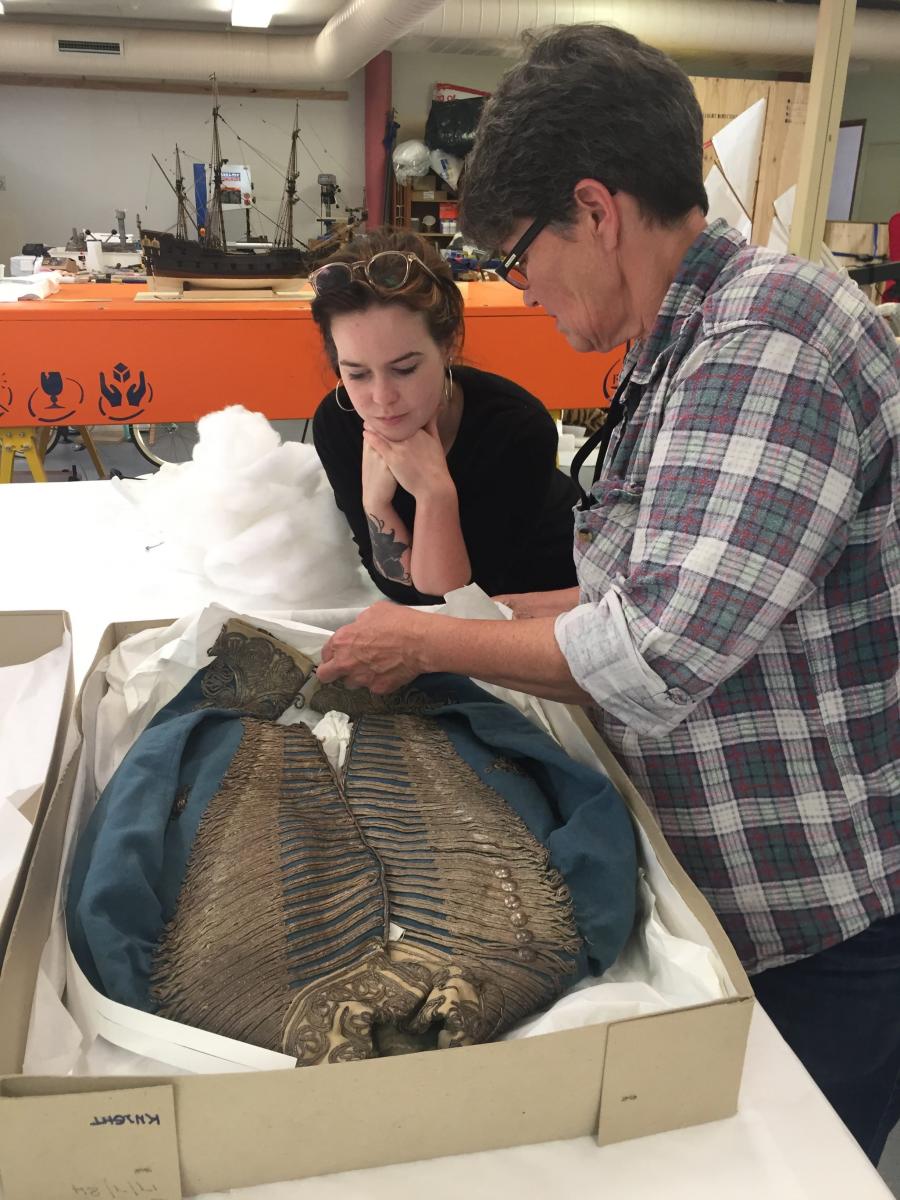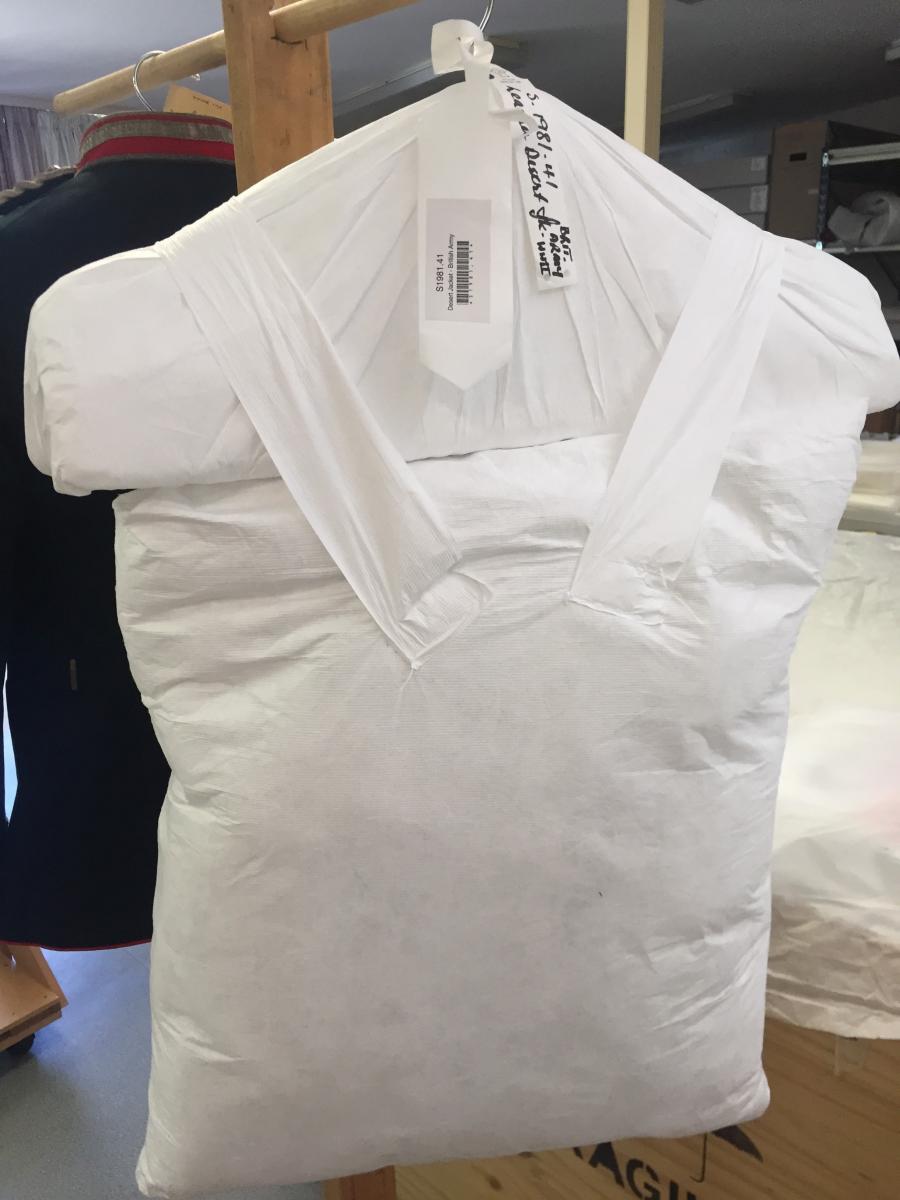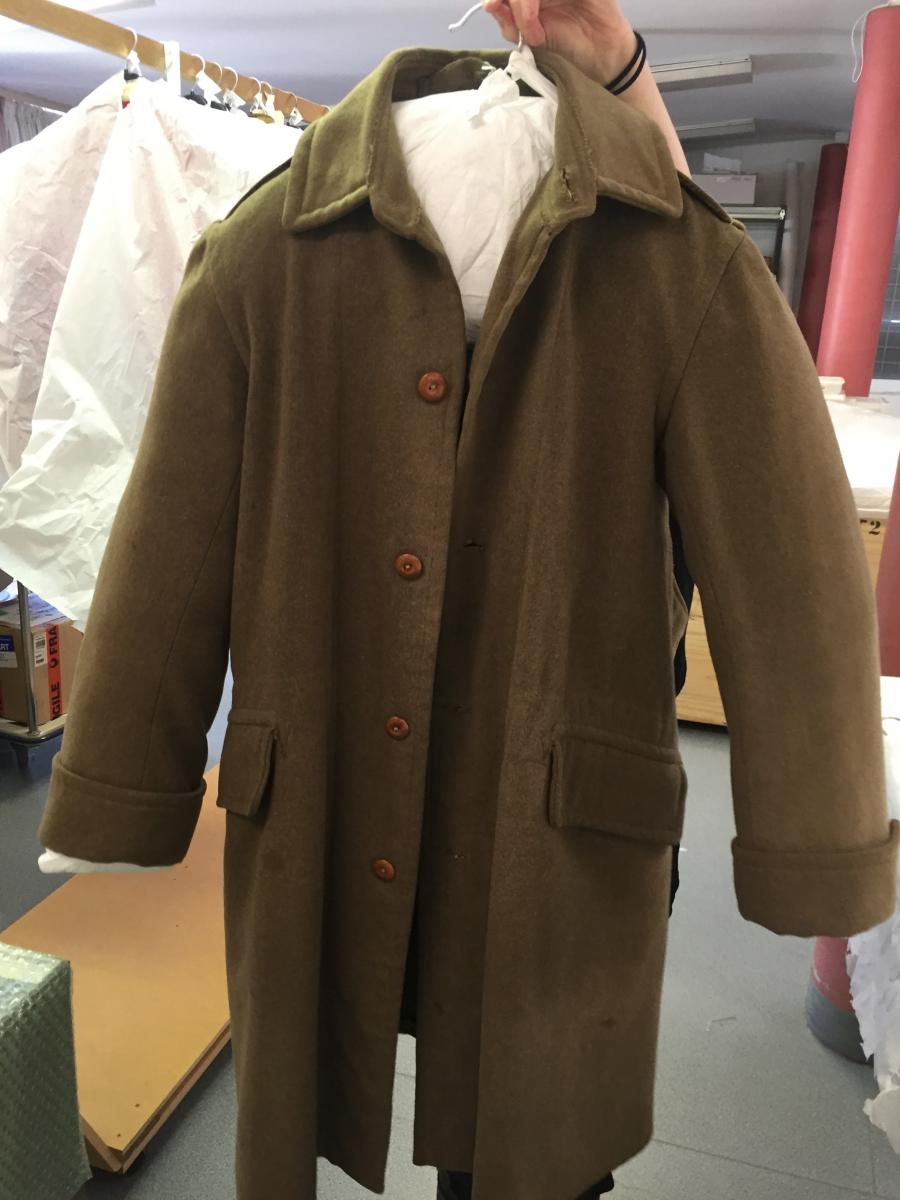Earlier this month we completed a two-week placement with Senior Objects Conservator Nikki King Smith at the Tasmanian Museum and Art Gallery (TMAG). Our project involved the preservation and re-housing of a collection of hanging military uniforms by creating custom storage supports, hangers and tailored covers. The collection included a range of items from heavy woollen overcoats, to metal embroidered captain jackets, to leather jerkins.
The first step was to understand the construction of the garment and purpose of the hanger. By examining the folds, seams, measurements, weight and structure, we were able to identify the original form and construction of the coats and how they were worn. This informed our specific designs for the creation of the custom hangers.

Nikki supplied us with a selection of new cutting tools, hangers, polypropylene foam and a hot glue gun. Our aim was to create a foam hanger that mimicked the form of the human body for which the coat was designed, allowing the garment to be safely hung without stress or gravitational slackening damaging the fabric. What sounded straightforward was quickly exposed as an extensive task of cutting, smoothing, rounding, gluing, testing, failing and repeating. It was important to avoid creating any blunt edges that would place stress on the fabric, and to use enough foam to appropriately pack out the garment to support the collars and maintain the original shape This was especially important for the heavier coats whose form on hanging was largely impacted by gravity. A familiarity with pattern making was useful in helping to visualise the subtle curves, shapes and proportions of the design, so our varied levels of experience with textiles opened a door for us to share our knowledge and learn from one another in a workplace environment. This was important for the overall success of the project. Once shaping was finished, we covered the hangers in Tyvek® and set them aside.

The next step was to design a padded support for the sleeves and body using Tyvek® that would allow the original shape of the sleeves to be preserved. The result was a pair of custom sewn supports filled with Dacron® that sufficiently padded the structure but were also able to be easily slid in and out without causing stress to seams. We concluded that using the more textured side of the Tyvek® would provide a slight grip to help prevent the support from dropping over time. The sleeves were shaped by inserting a dart at the elbow curve to follow the subtle bend of the sleeve contour, and ties were attached at the top to connect the supports to the hanger.

Lastly, most of the garments were covered in a large sheet of Tyvek® for protection during storage, however any coat with silver metal embroidery was covered using Intercept™ plastic. Bound with copper particles, this material acts as a sacrificial sheeting that neutralises volatile organic gases emitted from the wool to protect the metal thread from corrosion during long-term storage. It was decided that one particular blue jacket and pant would be stored flat due to the fragility of the lining and the extensive metal thread work throughout. This garment was supported using acid-free tissue paper and custom Tyvek® sleeves that were designed to carry the weight of the extensive metal thread, allowing the seams to relax. Care was taken not to directly touch the silver to prevent the transference of damaging oils, and once packed the entire outfit was covered with Intercept™ for additional protection.

By being introduced to new materials and methods of design we were able to build upon our appreciation for the subtleties involved in both the construction and conservation of textiles. With the support of TMAG and access to their unique collection, each one of us continued to develop and further refine our individual skills in the handling, hanging, storage and packing of heritage objects, and sincerely appreciate this opportunity for practical growth. We wholeheartedly thank Nikki for sharing her extensive knowledge, skills and expertise with us over the past two weeks, as we have gained so much from our time at TMAG. We look forward to any collaborations between students and staff that the future may bring.

Grace, Lauren and Petrina are graduate students at the University of Melbourne, currently undertaking Masters in Cultural Materials Conservation. On completion of their first year of studies, they travelled to Hobart to volunteer in a textiles conservation project at the Tasmanian Museum and Art Gallery.